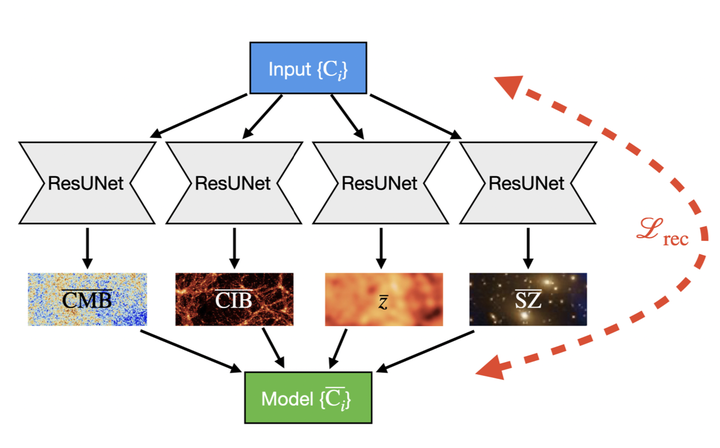
Abstract
We use a new approach based on self-supervised deep learning networks originally applied to transparency separation in order to simultaneously extract the components of the extragalactic submillimeter sky, namely the Cosmic Microwave Background (CMB), the Cosmic Infrared Background (CIB), and the Sunyaev-Zel'dovich (SZ) effect. In this proof-of-concept paper, we test our approach on the WebSky extragalactic simulation maps in a range of frequencies from 93 to 545 GHz, and compare with one of the state-of-the-art traditional method MILCA for the case of SZ. We compare first visually the images, and then statistically the full-sky reconstructed high-resolution maps with power spectra. We study the contamination from other components with cross spectra, and we particularly emphasize the correlation between the CIB and the SZ effect and compute SZ fluxes around positions of galaxy clusters. The independent networks learn how to reconstruct the different components with less contamination than MILCA. Although this is tested here in ideal case (without noise, beams, nor foregrounds), this method shows good potential for application in future experiments such as Simons Observatory (SO) in combination with the Planck satellite.